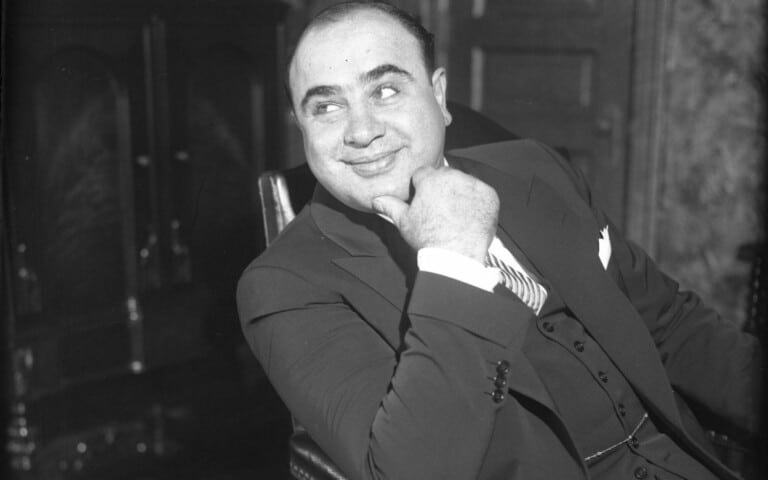Introduction
You cannot rely on newspaper articles. Recently, it featured the confessions of repenting organized crime members, i.e. the distorted truth for their interests. The police distorted the figures to get credit and money from the Federal Government.
Organized crime was considered a kind of un-American activity. Since more gangsters were ethnic (Jews, Russians, etc), calling them “un-American” was a way of dismissing American roots.
In Scarface, the motto “the world is yours” highlights the ironic vision between the American Dream and the gangsters.
The structure of organized crime is that of a bureaucratic and corporate model. It looks like a company organic line, with a complex hierarchy and a division of labour.
Responsibilities are carried out in an impersonal manner and the function is more important than the person.
Organized crime is a mirror of monopoly capitalism and from earlier gangster movies, it is considered as a business.
In Asphalt Jungle, “crime is just a left-handed form of human endeavour”.
The difference between organized crime and any corporation is that you cannot use written support: it relies on secrecy and personal networks.
Organized crime before Prohibition
The first gangs appeared in the mid-19th century in big cities, in ethnic districts. These gangs were born out of one major contradiction in the United States: the opportunity for all and equality for all – and real practice of this combination (the discrimination against foreigners: Jews, Catholics, Russians, Polish…)
The West was usually not an option in 1890 for it was closed. Eastern cities like Chicago were cities where ghettos had formed.
There was regulated competition in poor ghettos and knowing a gang member was a good way to get a job.
There were different levels: the federal level, the city level, and the county level. Each level has a strong degree of independence. One county could decide to stay dry (without alcohol) whereas another would be wet.
Police forces in the 1920s
Almost no state police at the time. The Federal agencies were weak until the 1930s. The police jobs were distributed this way: if you were given a job by a Democrat party, you would vote Democrat and influence other people to vote as such.
Pre-Prohibition Organized Crime
Since the end of the Civil War, American capitalism gave rise to monopoly capitalism, through horizontal integration (the bigger ones buy smaller ones and merge) and vertical integration (one company controlling several parts of a business: manufacturing or raw materials, distribution, selling…).
It is characterized by fierce competition: end of productive power, spreading of false rumours on the stock market, and taking advantage of it.
Newspaper magnate R. Hearst hired gangsters to buy his newspaper and convince others to buy it. C. Vanderbilt started a civil war to get control of the canal of Panama to protect his interests.
Hollywood used the practice called “blind booking” (or “block booking”) to be sure to control the distribution of their films. If a distributor wanted one film, it had to buy the whole stock. This gave rise to the Anti-Trust Act to prevent monopoly.
In the Chicago beer war, the means were slightly more violent but the aims were the same: to get the monopoly. As Al Capone put it: “I’m just a businessman, I provide what people need”.
The Prohibition: struggle for a definition of America
Prohibition was initiated by nativistic desires. We could define nativism as:
- a reaction to the changing patterns of immigration.
- industrialization and urbanization.
- changing moves.
Reaction to the changing patterns of immigration
Around the 1880s-1890s, people from Poland, Czechoslovakia, Eastern Europe arrived in America. This did not please the “older” Americans.
The USA was a protestant country and the Ku Klux Klan accused the immigrants of all the wrongs.
Industrialization and urbanization
The first American dream saw America as a land of morality. The urban way of life was a shift from an economy of scarcity to the beginning of the consumer society in the 1920s, with credits for cars, telephones, and entertainment…
Cinema was a symbol of a new technology and a new way of life, based on consumption. Money is here to be spent. Pleasure is worthwhile (cinema, cabaret, jazz).
The “Roaring Twenties” were a huge part of the young Americans. New types of sexual values: the “flapper” is the new 1920’s woman. (Note: the woman was the cornerstone of morality).
Censorship first applied to gangster movies and to the movies describing this new sexuality.
Changing moves
Prohibition is an attempt to give back America its morality.
The immigrants were associated with people who drank Italian wine, and Irish beer. After World War I, the enemy was Germany: drinking beer was unpatriotic.
The saloon was not only a place to drink but also a place of social life and a centre of vice (prostitutes).
Alcohol became the segregation line between the Americans and the undesirable (the immigrants).
It was also based on scientific data: eugenics (the idea of improving the race), and the idea of preventing alcohol from ruining future generations.
Henry Ford said it would improve the efficiency of his workers (even before the Prohibition, he used to check his workers, even at home !).
Creation of women’s movements to prevent abuse and violence at home. 1874 saw the creation of the Woman Christian Temperance Union (WCTV). The Anti-Saloon League was created.
Prohibitionists were not a majority and yet they managed to impose their will on the nation.
The real Prohibition came about on the 16th of January 1919 with the ratification of the 18th Amendment by 36 states.
In 1920, the Volstead Act prohibited the sale of all intoxicating beverages (more than 0.5% alcohol), except for the beverage needed for medical purposes.
The consumption of alcohol at home was not prohibited but its manufacturing, and distribution were.
This was not a popular law and people tried to drink all the more. Since the supply of alcohol was banned, they had to find other ways: making alcohol illegal made it more desirable.
The speakeasies were clandestine bars where you could buy alcohol. The Roaring Twenties were the age of jazz, alcohol, and sexual liberation.
Repression was made difficult by the widespread corruption at every level. Politicians were corrupted, especially at the Prohibition Bureau.
Prohibition made things go from bad to worse. Gangsters were able to intimidate witnesses and avoid going to prison. In 1920, there were 6.8 murders of 1000 people. In 1933, there were 9.7 murders of 1000 people.
The gangsters had a popular image: they were businessmen providing the people with what they needed. They were considered men who made it and embodied the American Dream, especially in the period of depression of the 1930s.
Prohibition increased enormously the power of gangsters. There was an economic mutation: alcohol was banned, the prices went up and there were high risks in running an alcohol shop.
Legal businessmen stopped their production, except for medicine or non-alcoholic beers (inferior to 0.5% alcohol). The thing is that before the removal of alcohol, you had alcoholic beers…
It became a highly lucrative system for gangsters, much more important than prostitution or gambling. It was an expensive investment but it produced high revenues.
You had to import your alcohol and hire people to protect it. Al Capone for instance hired 700 gunmen. Organized crime became very influential.
A way of getting alcohol was to hijack federal reserves or steal ale before the alcohol was removed, or alcohol destined for medical use. Some people tried to produce their whiskey, mixed with turpentine but it was so toxic that people could die from it (!).
Vertical integration controlled the importation and production of alcohol. Organized crime was first local and then became a wider organization thanks to syndication. Prohibition increased criminality. Organized crime in the United States was not imported.
Capone’s gang ruled part of Chicago and when it became too hot, it moved to Cicero. This control was so important that Capone was able to impose mayors.
Synopsis » Organized Crime in America during the Prohibition (1929-1951)
- Evolution of Organized Crime
- Organized Crime : Expression and Repression
- Organized Crime and the Prohibition
- Organized Crime in America
- Organized Crime: Repression and Censorship

